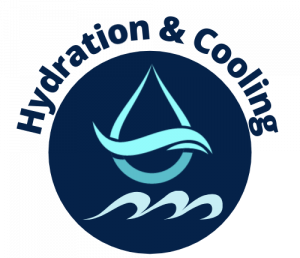Meta Description: Learn about optimal hydration practices for football players, including pre-game, during-game, and post-game strategies to maintain peak performance.
_______________________________
The Complete Football Hydration Guide
Why Proper Hydration Matters for Football Players
Football demands intense physical exertion, with players losing significant amounts of fluid through sweat during practices and games. Dehydration of even 2% body weight can impair performance, reduce cognitive function, and increase injury risk. Proper hydration strategies are critical for maintaining peak performance and ensuring player safety on the field.
Pre-Game Hydration Protocol
Effective hydration begins long before kickoff. Players should start hydrating 24 hours before game time, with increased fluid intake in the 2-3 hours prior to playing. During this period, athletes should consume 16-20 ounces of water or sports drink approximately 2 hours before activity, followed by another 8-10 ounces 15-30 minutes before taking the field. This preparation establishes a proper fluid baseline and helps delay the onset of dehydration during competition.
Electrolyte Considerations
Football players need more than just water. Electrolytes such as sodium, potassium, and magnesium are essential for nerve function, muscle contraction, and fluid balance. Pre-game nutrition should include electrolyte-rich foods or supplements, especially during hot weather conditions when sweat losses are greater. Many teams incorporate sports drinks into their pre-game protocol to address both hydration and electrolyte needs simultaneously.
During-Game Hydration Strategies
While on the field, football players have limited opportunities to hydrate, making each break crucial for fluid replacement. Players should aim to consume 7-10 ounces of fluid every 10-20 minutes when possible, typically during timeouts, between quarters, and during halftime. Position coaches should encourage regular hydration during sideline time, as thirst alone is not a reliable indicator of hydration needs during intense activity.
Hydration Station Setup
Effective team hydration requires strategic planning. Hydration stations should be positioned at multiple locations along the sideline for easy access. Many football programs now assign hydration specialists or assistant coaches to monitor player fluid intake throughout games. Using individually marked bottles can help track each player’s consumption and ensure everyone maintains proper fluid balance during competition. In addition to monitoring fluid intake, incorporating technology such as hydration tracking apps can enhance the effectiveness of these strategies. Football hydration station features should include a variety of electrolyte options to cater to differing player preferences and needs. Furthermore, implementing regular hydration breaks during practice can instill good habits that carry over into game scenarios.
Post-Game Recovery Hydration
Rehydration is a critical component of the recovery process after football games or intense practices. Players typically need to replace 150% of fluid lost to fully restore hydration status. This process should begin immediately after activity and continue for several hours afterward. Weighing players before and after games provides valuable data on individual sweat rates and helps establish personalized rehydration protocols.
Recovery Drinks and Timing
The ideal recovery beverage contains both carbohydrates and protein in addition to fluids and electrolytes. This combination accelerates glycogen replenishment while supporting muscle repair. Players should consume 16-24 ounces of fluid for every pound lost during activity, with consumption spread over the post-game recovery period rather than all at once to optimize absorption.
Seasonal Hydration Adjustments
Football seasons often span multiple climate conditions, requiring adaptive hydration approaches. During hot summer training camps and early-season games, players may need to double their normal fluid intake and prioritize electrolyte replacement. As temperatures drop in late season, dehydration risk remains significant but is often overlooked. Cold weather hydration should emphasize room-temperature fluids, as players are less likely to consume sufficient cold liquids in lower temperatures.
Monitoring Hydration Status
Coaches and athletic trainers should implement regular hydration monitoring throughout the season. Urine color charts in team facilities provide simple self-assessment tools, with pale yellow indicating proper hydration. More advanced programs may utilize specific gravity testing or regular weigh-ins to track hydration status. Educating players about personal hydration markers helps create team-wide awareness and accountability.
Individualized Hydration Plans
No single hydration approach works for all football players. Body size, position demands, sweat rate, and environmental conditions all influence individual hydration needs. Linemen typically require more fluid than defensive backs due to body mass differences. Creating position-specific guidelines while accounting for individual variations optimizes team hydration practices and supports peak performance for every player.
Conclusion
Proper hydration represents one of the most impactful yet underutilized performance enhancers in football. By implementing comprehensive hydration protocols before, during, and after games, teams can significantly improve player performance, reduce injury rates, and enhance recovery. Making hydration a priority requires education, planning, and consistent implementation, but the competitive advantages make these efforts well worthwhile for football programs at all levels. Investing in proper sports hydration equipment can further streamline these hydration protocols, ensuring players have easy access to fluids when they need them most. A sports hydration equipment overview reveals the variety of tools available, from portable hydration stations to infused water bottles designed to enhance electrolyte balance. By equipping teams with the right resources, coaches can foster a culture of health and performance that translates into improved on-field success.
